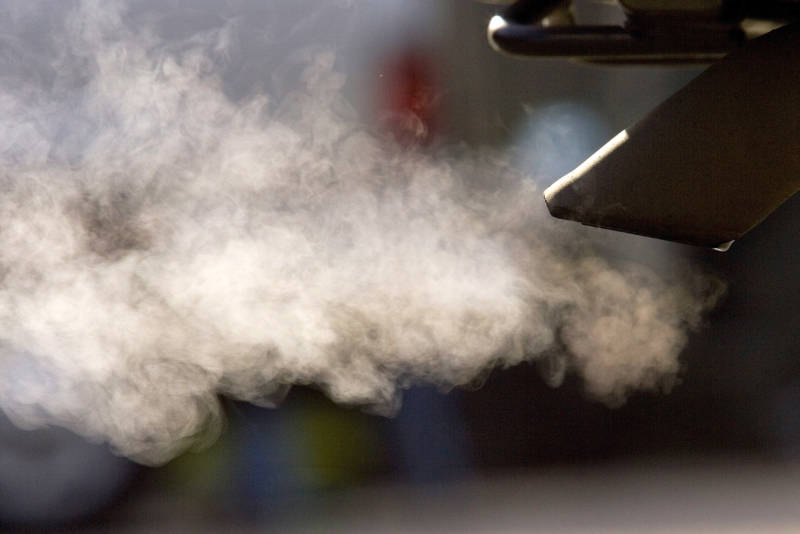‘Trying to Muddy the Waters’
EPA Administrator Andrew Wheeler raised the issue of the waiver when he addressed the National Automobile Dealers Association Tuesday. He said his agency will work with the U.S. Department of Transportation to “bring clarity to the proper — and improper — scope and use of the Clean Air Act pre-emption waiver.”
Wheeler said the the current standards set in the previous administration “focused almost exclusively on energy efficiency and carbon dioxide reductions.” Bloomberg, which first reported the coming announcement of the waiver’s revocation, said the administration’s plan “leaves intact California’s power to regulate smog-forming pollutants from autos and other sources.”
Wheeler seemed to say as much to the auto dealers.
“Our actions will not impact California’s health-based standards and programs,” he said. “California will be able to keep in place and enforce programs to address smog and other forms of air pollution caused by motor vehicles. This will allow the state to redouble its efforts to address its air quality problems and finally achieve compliance with EPA’s National Ambient Air Quality Standards.”
California routinely fails to meet federal smog standards.
Mary Nichols, chairwoman of the California Air Resources Board, pushed back against the notion of separating the issues of climate change from air quality and public health.
“They are trying to muddy the waters,” Nichols said. “The standards that we are in the process of enforcing are necessary to protect the public health and welfare. Not just because we care about the future of the planet. We need these extra clean cars in order to meet the health standards set by the federal government that we violate now on a regular basis throughout Southern California and the San Joaquin Valley.”
Ann Carlson, a law professor at UCLA, says the Trump administration has struggled to implement its long-promised plan of rolling back Obama-era auto emission standards. The process the EPA has to complete in order to formally roll back those rules has resulted in a “a mess full of errors,” she said. “The Trump administration is not yet in a position to roll back the Obama standards because their legal justifications are weak.”
Carlson added that the timing of the EPA’s announcement on California’s waiver is “completely suspect.” On the heels of the states agreement with automakers, Carlson said, the lifting of the waiver looks motivated by spite.
“It’s also terrible for the climate and clean air,” she said.
The Trump administration estimates that the rollbacks could increase total vehicle greenhouse gas emissions between 2% and 10%. That’s the equivalent of putting 9 million additional vehicles on the road.
Top California officials and environmental groups pledged legal action. Attorney General Xavier Becerra promised to meet Trump in court.
“While the White House clings to the past, automakers and American families embrace cleaner cars,” Becerra said in a statement. “The evidence is irrefutable: Today’s clean car standards are achievable, science-based, and a boon for hardworking American families and public health.”
Legal Outlook
It’s unclear when President Trump’s order will go into effect — California air regulators have yet to see any paperwork. It’s also unclear whether California will retain regulatory authority while the case is litigated.
While the law is clear that the EPA can grant the waiver, it says nothing about whether the agency can revoke it, said Julia Stein, a supervising attorney with UCLA’s environmental law clinic.
“There has never been a waiver revocation in the entire 50-year history of the Clean Air Act,” she said. “We’re really in unprecedented territory here.”
Stein said that normally when a federal regulatory action will have fiscal impacts, as is the case with Trump’s plan, the Office of Information and Regulatory Affairs must review that action within 90 days. However, it’s possible that because a draft of the waiver went to the agency earlier this year, the review could take only 45 days.
The Trump administration could pursue an expedited review if it designates the changes an emergency, but Stein called into question the rationale for such an action.
Once the regulatory affairs office finishes its review, California will have 60 days to sue.
“Once litigation is filed, it is possible that California could seek a stay to keep waiver authority in place while the case is pending,” Stein said. “If a court were to grant a stay, California would continue to have the right to enforce its standards until the action is resolved.”
‘Chaos’
Michael Wara, a lawyer and research fellow at Stanford University, said the administration is pursuing an agenda of regulatory rollbacks that extends beyond what businesses want. In this case, Trump’s plan could set off deep uncertainty within the auto industry.
“This is chaos,” he said.
Wara added that the timing of the announcement was clearly made with the upcoming presidential election in mind. “They want the litigation to be concluded with a final Supreme Court decision by the time that the November 2020 elections occur,” Wara said. “They are looking at the clock.”
Reducing Emissions Through Technology … and Burning Less Gas
While California can set tougher rules for tailpipe emissions, a 1975 law that requires what’s called corporate average fuel economy standards says only the federal government can set gas mileage standards.
So automakers can reduce greenhouse gases through innovation and technology, or they can make cars that burn less gasoline, and California’s rules have had the effect of pushing manufacturers to build more fuel-efficient cars.
Over decades, EPA granted waivers to California so it could reduce smog from vehicles by requiring tighter-fitting fuel caps, catalytic converters, check-engine lights and other measures.
In 2007, the U.S. Supreme Court ruled in the landmark Massachusetts v. EPA decision that the federal government could use the Clean Air Act to regulate greenhouse gases. Afterward, California passed rules to reduce greenhouse gas emissions from vehicles.

